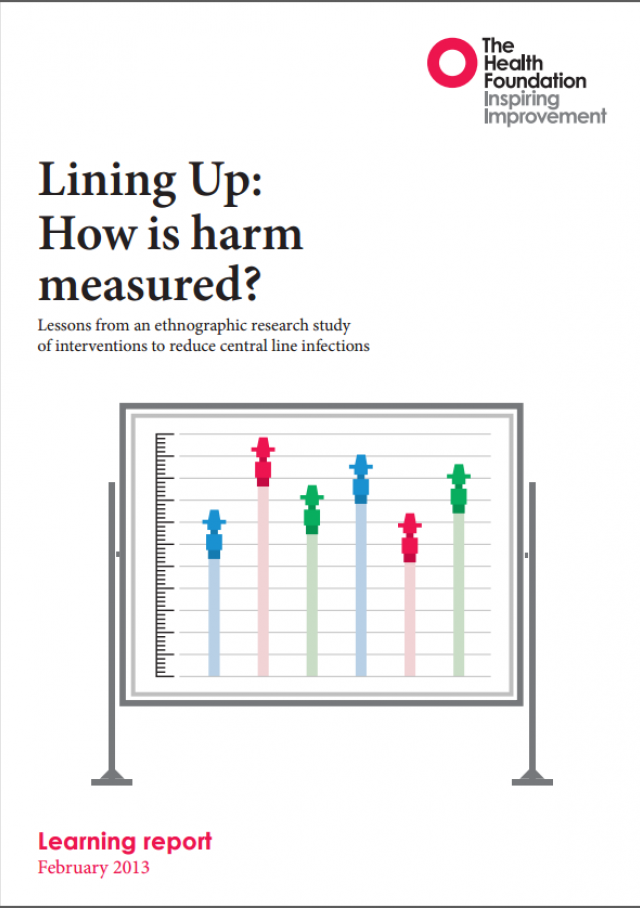Lining Up: How is harm measured? Lessons from an ethnographic research study of interventions to reduce central line infections
February 2013

Key points
- By observing implementation of a nationally organised infection control programme, the Lining Up research team discovered how organisations go about interpreting data definitions, collecting data and reporting results.
- Apparently straightforward measurement tasks were found to be highly complex and subject to a range of human factors that rendered them so inconsistent as to undermine comparisons between organisations.
- This implies that policy makers need to be cautious about attaching incentives and penalties to findings reported for performance management purposes.
This learning report looks at lessons from the Health Foundation’s Lining Up research project – an investigation into interventions to reduce central line infections. The report describes findings that have important implications for measurement of performance, and using measurement to improve quality and ensure patient safety.
The project also demonstrates that, without a standardised approach and excellent data collection, quality improvement initiatives will fail to change culture or behaviour.
This is the first Health Foundation learning report about the Lining Up research. The second report, Lining Up: How do improvement programmes work? (see Further Reading below), looks at lessons from the project about implementing successful improvement initiatives in a new setting.
Further reading
Work with us
We look for talented and passionate individuals as everyone at the Health Foundation has an important role to play.
View current vacanciesThe Q community
Q is an initiative connecting people with improvement expertise across the UK.
Find out more

